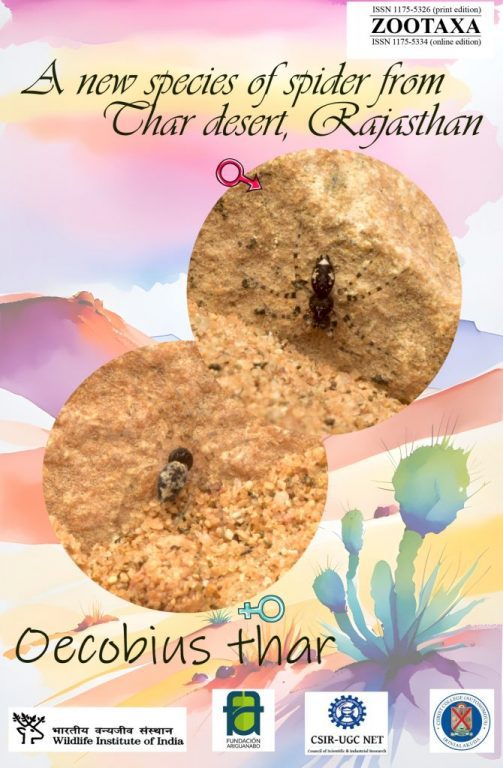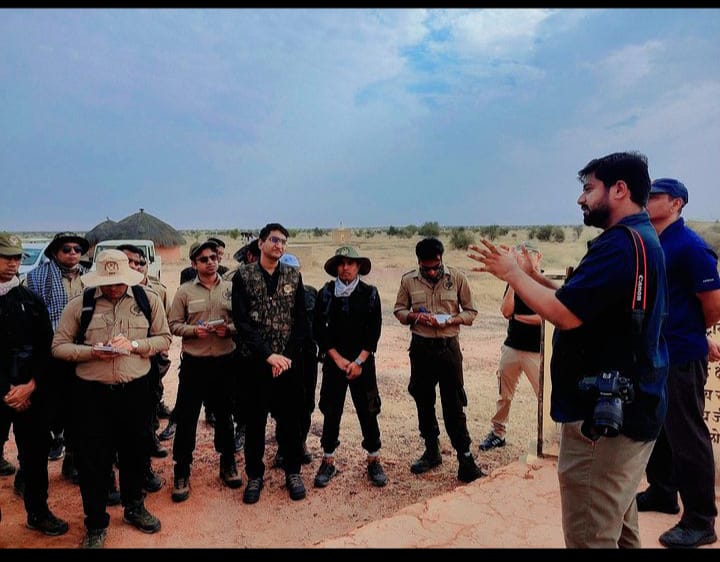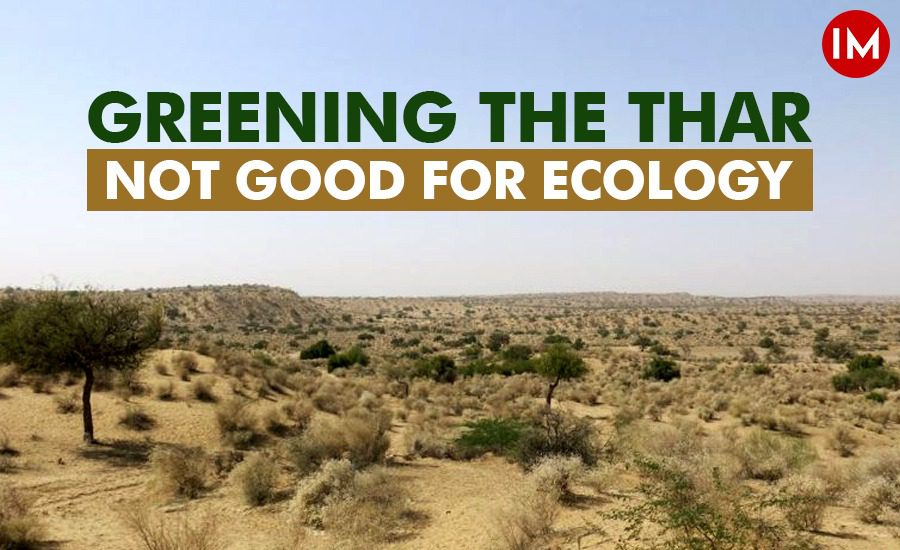Spread across 200 000 Square Km area covering Rajasthan and some parts of Gujarat, Punjab & Haryana, ‘Thar’ Desert is world’s 18th largest desert. Even with the dry weather and limited vegetation, the area is home to some unique fauna like Great Indian Bustard, Blackbuck, Chinkara, fox, Bengal fox, wolf, and some lizards.
Of late Thar has attracted some new species that might be small in size but indicates towards the right efforts. This is results of Biparjoy Cyclone’s effect and controlled plantation while maintaining the desert ecosystem.
The area has been witnessing some migrant butterflies and recently, two new species of spiders too have been discovered in the area. They have been named Palpimanus godawan and Palpimanus maldhok in honour of Great Indian Bustard or GIB (a critically endangered bird found locally).

Both of them are different from the three spiders commonly found in the country. They have been found by Arachnologist (spider expert) Mr. Rishikesh Tirpathi near human habitation outside Desert National Park (DNP). In a conversation with Indian Masterminds, Indian Forest officer posted in DNP, Dr. Ashish Vyas and Mr. Tripathi said that this discovery shows the importance of the need to conserve the desert ecosystem both inside and outside the park.
A VICTORY FOR CONSERVATION
While Thar is a massive landmass yet it has not been explored much. Mr. Tripathi found them while looking for the species these really small size spiders on the wall during. “They are around 1mm-2mm of size but are mature. At first glance, we didn’t know this is new species. We took it to our lab in Kerala and an extensive research confirmed our find”, said Mr. Tripathi.
The discoveries was announced in September in European Journal of Taxonomy. The existence of new species is believed to be due to the habitat protection for GIB. When asked about the importance of these in conservation Mr. Tripathi, “Each species, no matter their sizes play an important role in the whole ecological system. All species are inter-linked and part of food chain. Generally the spiders feed on mosquitos, flies and ants, thus playing a part in pest & insect control.

WHY WE NEED TO PROTECT THE DESERT?
Mr. Vyas too highlights the importance of protecting desert eco-system. These discoveries are the victory for conservation efforts. He emphasizes the need to save the desert, as it brings the monsoon. When the desert is heated, it creates low pressure and thus attracts the rains. So, it isn’t wise to turn the dessert completely green. That will not only destroy the species (both flora & fauna) but will also create hindrance in the climate.
“We have a mandate of not planting trees insides the DNP except the grassland for GIB and some other species. We don’t want any intervention that will disturb the eco-system. The plantation is only done around the Indira Gandhi Canal to stabilize the sand dunes and prevent sand from falling in the Canal”, said Dr. Vyas.

































